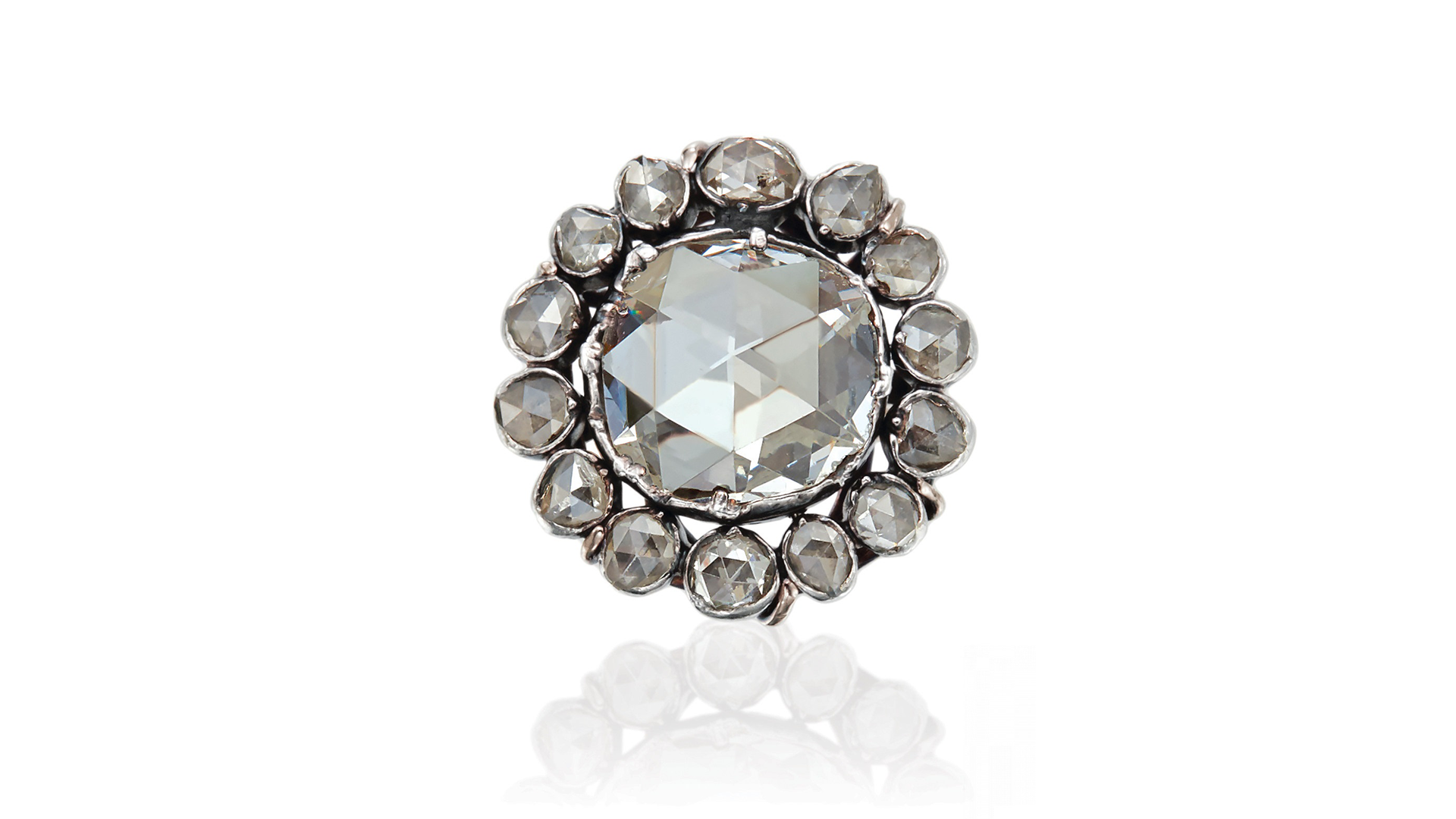Have you ever wondered about a rare and exquisite antique piece of jewelry and how it came to be for sale today? All pieces of antique and vintage jewelry have a story to tell, but some stories stand the test of time better, either because the jewel is a family heirloom and the story is passed down with the piece, or because the original owner was a famous historical figure. Sometimes it’s a combination of the two.
This is the story of Emperor Maximillian (1832-1867) and his diamonds buttons that have found their way into today’s jewelry collections. Maximillian was born an Austrian Archduke. He was the second son of Archduke Franz Karl of Austria and Princess Sophie of Bavaria. As a second son, his life path was more open than that of a first born, who was destined to become the next ruler. Instead Maximillian had a very successful career as an officer in the Austrian Imperial Navy where he modernized the institution.
Maximillian Goes to Mexico
In 1859 Maximillian was approached to become the Emperor of Mexico. The country was in tatters from the Reform War and had defaulted on many debts owed internationally. It was thought that having a European ruler would help the country stabilize. Maximillian declined the offer. In order to have its debts repaid, France invaded Mexico in 1862 and a year later the French were in charge of the country. Maximillian was once again asked, by the French, to become Emperor of Mexico and this time he said yes.
He arrived in Mexico with his wife, Charlotte of Belgium in 1864. The country was still reeling from the effects of the Reform War and the dueling factions — liberals and conservatives —continued to disagree. It’s thought that Maximillian genuinely wanted to help the poor people in the country. He made numerous changes including abolishing child labor, restricting working hours and cancelling the debts of peasants. Maximillian also supported religious freedom and voting rights for those who were not land owners.
The French left Mexico and asked Maximillian to leave with them, instead he chose to stay believing that he could actually help the people of the country. The wealthy class opposed the reforms that Maximillian instituted and he was overthrown by Benito Juarez and his followers. In 1867 he was executed.
Boston, 1981
Fast forward to Boston in 1981. A young woman starting out in the industry, Janet Levy, went on her daily visit to see her great Uncle Sydney DeYoung, the patriarch of J.&S.S. DeYoung, a company specializing in antique and vintage jewelry. When he was 89, Uncle Sydney had a series of strokes and was unable to come to the office, so he asked that any new purchases be brought to him for inspection at the Ritz-Carlton Boston where he was living after his stroke.
One day Janet went to show Uncle Sydney the company’s latest purchases and she handed him a beautiful antique rose cut diamond ring. She was having a hard time accurately, estimating the weight of the diamond because it was very different from other diamonds that she had seen. For 70 years Uncle Sydney had kept a series of black notebooks, showing tracings of the perimeter of the diamonds he purchased in the past and also measurements of unusual shaped diamonds. The books were used as references to help estimate the weight of rare and unusual antique shape diamonds. Janet had gone through the series of little black books and there was really nothing comparable in the books to the rose cut diamond she had.
How Uncle Sydney Got Maximillian’s Buttons
In the early 1930s, during the great depression, one of Emperor Maximillian’s heirs inherited the collection of 76 antique rose cut diamond buttons, belonging to Emperor Maximillian. The antique diamond button collection was brought to Uncle Sydney by one of his customers from the western part of the United States.
Uncle Sydney bought the entire collection of buttons and sold them to Armand Hammer of Hammer Galleries, located on 57th street in New York. Hammer was an art and jewelry retailer with a great imagination. He realized that many American customers wanted to purchase items with a royal provenance. Hammer converted the entire collection of 76 buttons into rings. He developed an advertising campaign “Own a Royal Ring” and began selling the rings in the early 1930’s and continued to sell them through 1947. A letter, dated 1931, from the Museum and Art Collections of the Late Crown Possession in Bavaria, accompanied the set of diamond buttons, confirming that they can be traced back to 1763.
All of the rose cut diamonds in the buttons are thought to be from the Golconda mine in the Northern region (modern day Hydrabad) of India, where the world’s diamonds came from prior to the mid 1800s. Diamonds from the Golconda region were generally larger and higher quality than those from other mines in the area. Additionally, the style of the diamonds indicate that they were cut in the traditional Indian way and most likely brought to Europe by one of the gem traders who went there in search of jewels for the royal and wealthy. It is most likely that at one point the diamonds in Maximillian’s buttons belonged to an Indian Maharajah. Set in silver-topped gold, each button was slightly different, but they all have rose cut diamonds.
After a long and winding journey, the first of four of Emperor Maximillian’s diamond buttons came back to J.&S.S. DeYoung in 1981. Three others have since resurfaced and each one has its fractional diamond weight inscribed in the shank — it’s not just a ring, it’s a real piece of history that’s very personal and tells the story of bygone eras. And that’s the magic of antique jewelry.
You can find Emperor Maximillian’s diamond button ring on the Jewelers Circle.
Featured image (top of page): Emperor Maximillian’s Diamond Button Ring
Authored by Amber Michelle

